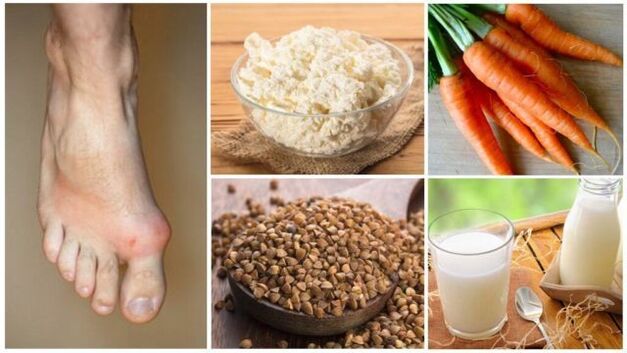
An improper diet combined with impaired nutrient absorption leads to the progression of gout. This disease occurs when the uric acid level in the blood exceeds the permissible limit values (in men over 420 μmol / l, in women at 350 μmol / l). The disruption of metabolic processes leads to the fact that salts of this acid settle on the walls of the intestine, blood vessels, on the joint surfaces and damage important organs of human life.
Over time, the disease becomes chronic with frequent relapses. In the acute phase, in the place where the pathological process is localized, patients suffer excruciating pain. Dieting for gout will help normalize uric acid levels and reduce the frequency of relapses.
Why Diet For Gout?
An important task of therapeutic measures is to reduce the nature and frequency of manifestations of the disease. This can be achieved by reducing the levels of uric acid in the body.
The development of gout attacks is caused by:
- Consuming large amounts of foods high in purine;
- Metabolic disorder.
Optimizing the diet allows you to start the right processes of assimilation and excretion of substances. Therapeutic measures aimed at eliminating the causes of the development of the disease are closely related to compliance with the restrictions of some food addiction. With the help of a properly composed diet menu, you can slow the progression of the disease.
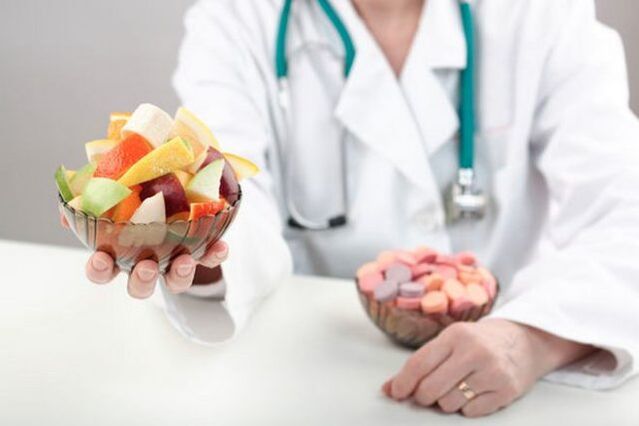
The foods that make up a person's daily diet should include foods that contain a large amount of substances that are beneficial for the body.
Nutritional therapy for gout aims to reduce symptomatic manifestations by eliminating the food components that cause them. The products that a person eats every day have a huge impact on their general health and are responsible for the chemical processes that take place in the human body throughout its life.
What not to eat with gout
Based on the studies, scientists have identified a list of products that directly provoke the primary development of the disease and its further progression.
The list of what not to eat for gout includes:
- smoked spicy cheese and cheese product;
- high-cholesterol meat and bone products (pulp of young animals and pigs, hooves, buldyzhki);
- Meat and bone fats, ear;
- High fat fish (sardines, sprats);
- pickled vegetables, pickled fruits (cabbage, watermelon, cucumber, apples);
- hot, cold smoked products;
- Legumes (peas, beans, soybeans, lentils);
- Greens that contain oxalic acid (spinach leaves, sorrel, rhubarb root);
- hot spices, sauces;
- some varieties of vegetables (Brussels sprouts and cauliflower, radish);
- internal organs of animals obtained from slaughtering carcasses (kidneys, liver, lungs, heart, brain);
- Oat groats;
- Confectionery fat products;
- Alcohol of any percentage;
- Fruits and berries (grapes, raspberries, figs);
- hot, spicy and essential spices (bay leaves, horseradish, chili pepper);
- Fat and oil products of animal origin (lard, margarine, lard);
- Canned meat, fish and vegetables.

When the diet is imbalanced or includes a large amount of fatty, spicy, or heavy meals for the digestive system, a person's metabolism may be disturbed.
The list of products the use of which is recommended as limited:
- Coffee, strong tea;
- Butter;
- Plums;
- Nightshade vegetables (eggplants, tomatoes, peppers);
- Table salt, granulated sugar;
- Mushrooms (only at the time of remission).
To relieve a seizure and maintain a state of remission, it is important to remove the above foods from the diet for a long period of time.
What can you eat with gout?
List of foods recommended by patients with this disease:
- dietary meat products (rabbit, poultry, lean beef);
- lean white fish (pike, pikeperch, cod, pollock);
- Bran and rye bread;
- Chicken eggs (excluding the yolks);
- Cereal bowls (rice, wheat, buckwheat, millet, pearl barley);
- fresh vegetables (beets, carrots, cucumbers, cabbage, potatoes);
- seasonal fruits, berries (watermelon, melon, apricots, strawberries, peaches, cherries, blackberries, green apples);
- Pasta;
- Nut kernels (hazel, walnuts, cedar);
- Herbal teas and decoctions (Dubrovnik, basil, catnip);
- fermented milk products, cottage cheese;
- freshly squeezed juices, fruit drinks, compotes;
- boiled tomatoes;
- Spices (turmeric, fennel, basil);
- Vegetable oil (olives, rapeseed).

Nutritional therapy for gout will help the patient quickly get rid of unpleasant and painful symptoms at home.
In limited quantities, natural honey is useful for gout. This product is suitable as a sugar substitute.
Honey has many beneficial properties:
- immunostimulating;
- Antioxidant;
- Improvement of metabolic processes;
- bactericidal.
You should not abuse this beekeeping product during the acute phase. Patients with this disease need to eat foods that are rich in vitamins, trace elements, and amino acids. Pharmaceutical fish oil for gout is a useful supplement.
General food rules
Removing certain prohibited foods from your usual menu does not guarantee instant relief. In addition, the list of products varies depending on the stage and severity of the course of the disease. Diet for gout during an exacerbation, therefore, involves adhering to more stringent restrictions than during remission.
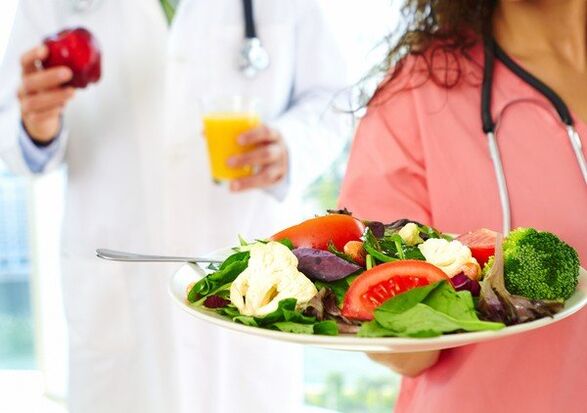
There is a common set of rules for patients with this disease, compliance with which is important in nutritional therapy:
- Eat in short portions (5-6 times) in small portions several times a day. Hunger causes an increase in acetone in the urine. And this can aggravate the course of the disease.
- Chew food thoroughly, do not overeat.
- Limit the amount of table salt used in the preparation of dishes (up to 5 grams per day). Salt has the property of retaining fluid in the tissue, which in turn leads to the deposition of uric acid salts.
- Optimize the body fluid balance. For this purpose, it is recommended to drink at least 2 liters a day.
- Arrange fasting days. Preferably vegetables, dairy products and fruits (with the exception of those prohibited for consumption).
- Adhere to restrictions for a long time, as short-term use of a therapeutic diet will be ineffective.
People who have severe metabolic disorders, diabetes and gout need to exclude dishes that cause increases in uric acid and insulin levels in the blood. The diet for gout and diabetes is designed to reduce these indicators in order to avoid the development of exacerbations and complications.
How do I prepare the food correctly?
The limitation of the shopping list is not the only point to consider. It is important to choose the right cooking method when preparing your meals.
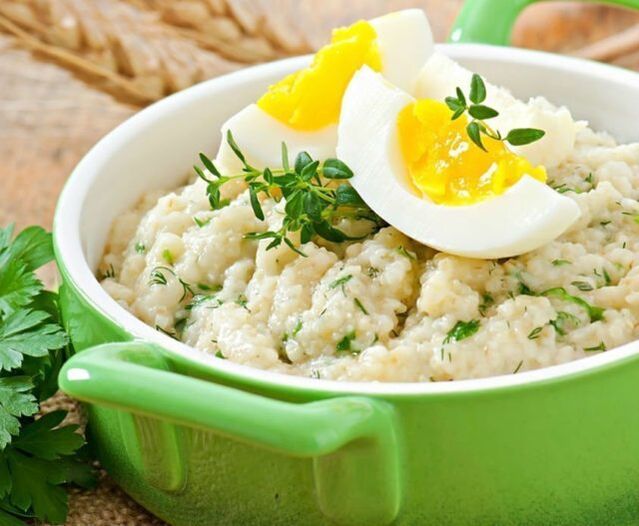
There are no special requirements for the preparation of products, with the exception of meat processing.
Cooking is permitted in the following ways:
- for a couple;
- To bake;
- Clear;
- Boil;
- Languor.
Cooking is contraindicated by:
- Roast meat;
- Smoke;
- Salting and pickling;
- Fermentation.
Don't use stale, burnt food. The temperature regime of the food consumed should be optimal for food and should not exceed a temperature of 40 degrees Celsius. The food shouldn't be rough and tough. If necessary, individual dishes can be chopped with a mixer.
Effective nutrition: menu for every day
Medical nutrition should meet the physiological needs of the patient with regard to the content of important components (protein-carbohydrate-fat balance), calories, vitamins, microelements and amino acids.
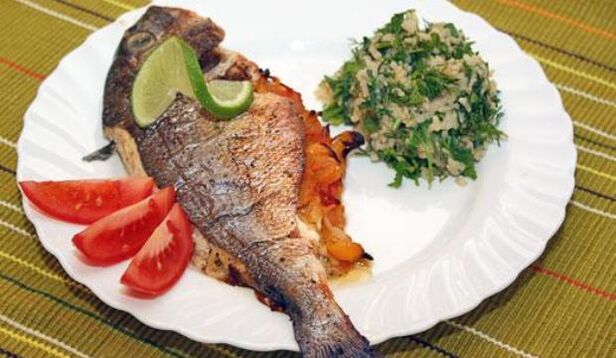
Approximate diets for gout and high uric acid levels:
1 day
First breakfast: boiled cod, mashed potatoes, black bread, white cabbage salad seasoned with sour cream, a cup of weak coffee with saccharin.
Second breakfast: cottage cheese casserole, boiled egg, bran bread, tea drink.
For lunch: vegetarian soup with roasted roots and potatoes, beef stew, buckwheat porridge, fresh cucumber, 1 apple.
Dinner: carrot chops, pasta, milk, biscuits.
At night: 200 ml kefir.
2 day
First breakfast: steamed white cabbage, 1 boiled egg, black bread, cappuccino.
Second breakfast: cappuccino, biscuits.
For lunch: lean borscht, bran bread, baked poultry fillet, boiled rice, fruit jelly.
For dinner: steamed potatoes with vegetables, vegetable casserole, bran bread with butter, a glass of broth.
At night: 250 ml sour milk.

Day 3
First breakfast: vegetable salad (white cabbage, carrots, apple), weak coffee.
Second breakfast: cottage cheese with sour cream, rose hip broth.
For lunch: barley soup with sour cream, steamed cutlet, mashed potatoes, berry jelly, wholemeal bread.
For dinner: carrot cutlets with fruit, semolina casserole, a glass of milk.
Before bed: steamed plums.
4th day
First breakfast: grated carrots with sour cream, wheat porridge, a glass of green tea.
Second breakfast: dried fruit chops, compotes, biscuits.
For lunch: milk noodles, boiled chicken with baked pumpkin and potatoes, fruit jelly, black bread.
For dinner: baked cheesecakes in the oven, carrot and apple cutlets, a glass of tea with lemon.
At night: 200 ml of warm milk.
Day 5
First breakfast: porridge in buckwheat milk, green tea.
Second breakfast: a glass of fresh carrot.
For lunch: vegetable rice soup with sour cream, boiled beef, beetroot caviar, basil infusion with honey, black bread.
For dinner: pumpkin casserole with sour cream, a glass of weak tea, crackers.
Before bed: rose hip infused with honey.
6 days
First breakfast: chicken protein omelette, steamed beets, white bread, a glass of weak coffee.
Second breakfast: zucchini casserole, fruit and berry compote.
Lunch: vegetarian barley soup, boiled potatoes, steamed meatballs, jelly, black bread.
Dinner: Rice boiled in milk, a weak tea drink.
Before going to bed: a glass of yogurt.
The standard nutritional scheme is drawn up by a doctor. There are many possible combinations for dietetic meals. Diet number 6 is common for gout. Its main principle is the exclusion of foods and dishes with a high content of purines, the addition of alkaline drinks to the diet and gentle processing during cooking. An independently compiled menu with a restriction on the amount and type of food can lead to a protracted course of the disease.













































































